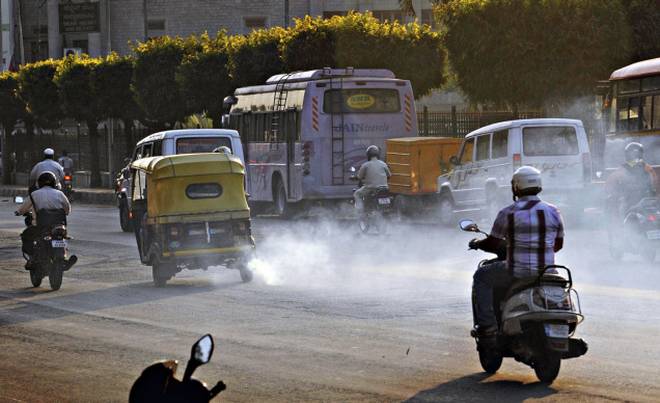With about 30,000 strong, the auto-rickshaws in the city have the largest network of small vehicle-based public transport system
SCIENCE BEHIND
What makes these vehicles an environmental hazard is that the three-wheeled-rickshaws are powered by small, single-cylinder diesel engines of less than 500 cc displacement. Experts suggest that the small engines with unstable emissions and high exhaust temperatures do not allow them to apply any advanced and effective after-treatment systems that are used in other diesel vehicles.
What make them even worse are their highly toxic, cancer-causing fumes that are dangerous to human health. Bhubaneswar has seen rapid urbanisation in last decade and the heavy reliance on the auto-rickshaws is a cause of concern for the city’s well being
- Samanta Routray| environmentalist
Bhubaneswar: When it comes to public transport, the auto-rickshaws in the capital city are considered to be in the driving seat. However, the hazardous level of pollution generated by these three-wheelers has raised concerns for environmentalist and urban planners.
With about 30,000 strong, the auto-rickshaws in the city have the largest network of small vehicle-based public transport system. Providing low volume but high frequency services, these three-wheelers are lifeline to many.
According to reports, the demand for auto-rickshaws forms four-five per cent in major cities in India. While in metropolitan cities the demand is as high as 16-17 per cent, Bhubaneswar has 30-35 per cent participation of total trips in the city owing to lack of a robust public transport system.
However, studies conducted by individual agencies have shown that the pollution in Indian cities due to auto-rickshaws contribute substantially to local air pollution. Research shows that these vehicles contribute as much as 21 per cent of vehicular pollution in Bangalore; 26 per cent in Chennai; and 15 per cent in Pune.
“These point-to-point shuttle services emit several times more toxic pollution compared to most other vehicles on the roads. What make them even worse are their highly toxic, cancer-causing fumes that are dangerous to human health. Bhubaneswar has seen rapid urbanisation in last decade and the heavy reliance on the auto-rickshaws is a cause of concern for the city’s well being,” said Samanta Routray, a local environmentalist.
As per the current emissions standards of Bharat Stage IV (BS-IV), a diesel auto is legally allowed to emit 1.7 times higher particulate matter and 1.3 times higher NOx+HC than a BS-IV diesel car. Although with arrival of Bharat Stage VI (BS-VI) by 2020, these vehicles are expected to be much cleaner; a diesel three-wheeler will still emit close to six times higher particulate matter and two times more nitrogen oxide compared to a BS-VI diesel car.
Although many auto-rickshaw owners have now opted for CNG vehicles or have newer models with lower carbon emissions, experts doubt their impact on pollution reduction. “The 2002 Mashelkar Expert Committee report on ‘Auto Fuel Policy in India’ observed that CNG vehicles for one mile emit 20 per cent more greenhouse gases than a diesel vehicle for the same distance. Although CNG vehicles emit 80 per cent less particulate matter and 35 per cent less hydrocarbons, other pollutants show a considerable increase,” commented Sudhashankar Rao, an auto-expert.
According to RTO sources, the number of auto-rickshaws in the city has gone up by 18 times in past five years. This coupled with high vehicle-human ratio is resulting in constant degradation of air quality of the capital city. Individual studies with figures available from government data show that the average Air Quality Index (AQI) of the city is ‘moderately polluted’ but it is nearer to the range of ‘heavy air polluted region’.
Is blanket ban panacea for environmental degradation?
“Not really,” says Shubhendu Mohapatra, a former city-based urban planner. “If these systems are banned a sudden deficit on public transport in our city can lead to higher dependence on personal vehicles.”
“In fact, as much as 82 per cent reduction in CO emission, and 83 per cent reduction in CO2 emissions are possible if car trips are replaced by auto rickshaws. A huge reduction in traffic volume is possible in terms of passenger car unit. However, the mode of operation from diesel or CNG should change to electronic rickshaws.”
AVIRAL MISHRA, OP
